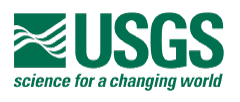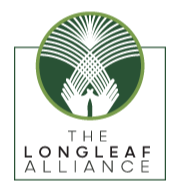Videos
WLFW Pollinator Conservation Webinar Series: Session # 11 PF/QF’s Pollinator Habitat Program
Session 11 of the WLFW East Region Conservation Webinar series was presented by Kim Cole, PF/QF’s Habitat Education Program Manager. This session focuses on resources for hosting pollinator events and is the second session on “pollinator outreach” in the series. Topics covered include Pollinator Habitat Outreach Program, Habitat Education Resources, and Milkweed in the Classroom.
DOI Nature-based Solutions Roadmap
The purpose of the Department of the Interior Nature Based Solutions Roadmap is to provide Department of the Interior (DOI) staff with consistent and credible information about nature-based solutions, such as which strategies match certain conditions and goals, what co-benefits they are likely to provide, example projects, and additional resources for project planning, construction, and monitoring.
WLFW Pollinator Conservation Webinar Series: Session # 10 How to Do a Pollinator Outreach Event
Session 10 of the WLFW East Region Pollinator Conservation Webinar series was presented by Catherine Beall, South Dakota’s Monarch and Pollinator Coordinating Wildlife Biologist. This session focuses on how to host a pollinator outreach event and is the first session on “pollinator outreach” in the series. Topics covered include the first steps to consider when organizing an event, assembling an agenda, how to advertise, how to prepare the week of the event, things to consider on the day of the event, and follow-up after the event.
Wildland Fire Resources
General resources for the Southeast FireMap. Includes files and videos that relate the the FireMap as a whole.
WLFW Pollinator Conservation Webinar Series: Session # 9 Pollinators & Forestland-Underappreciated Pollinator Habitat
Session 9 of the WLFW Pollinator Conservation Webinar series, presented by Kass Urban-Mead, Pollinator Conservation Specialist for the Xerces Society and a Partner Biologist with the USDA Natural Resources Conservation Service. This session focuses on the relationship of pollinators and forestland. Topics covered include an introduction to bee diversity and forest habitats, how bees and other pollinators use the woods, and forest health and pollinators.
WLFW Pollinator Conservation Series: Session # 8 Pollinators and Livestock Grazing
Session 8 of WLFW East Region Conservation Webinar series, presented by Jason Jones and Katrina Sims, Grassland and Grazing Coordinators in Ohio and Arkansas, respectively. This session focuses on grazing livestock with consideration of pollinators. This is the third of three sessions on “pollinator habitat” in the series. Topics covered include benefits of native grassland restoration, native grazing considerations for conservation planning, pasture conversion and establishment, and grazing strategies.
WLFW Pollinator Conservation Webinar Series: Session # 7 Do I Need a Pollinator Seed Mix and How to Build One
Session 7 of WLFW Pollinator Conservation Webinar series, presented by Kelly Gill, Pollinator Conservation Specialist for the Xerces Society and a Partner Biologist with the USDA Natural Resources Conservation Service. This session focuses on building seed mixes designed for pollinators and is the second of three sessions on “pollinator habitat” in the series. Topics covered include recognizing whether a seed mix is needed, various seed mix options through NRCS, and specific information needed to build a seed mix such as habitat design and species selection.
AFS Newsletter December 2023
Hutton Applications Open, WOTUS Call to Action, Angling for Blue Catfish with Sonar
WLFW Pollinator Conservation Series: Session #6 Planning & Establishing Pollinator Habitat
Session 6 of WLFW Pollinator Conservation Webinar series, presented by Celia Vuocolo, WLFW Pollinator Coordinator-East with Quail Forever & USDA-NRCS. Topics covered include a step by step process for planning and establishing pollinator habitat, including site selection, options for restoration and Farm Bill programs planning process.
WLFW Pollinator Conservation Series: Session #5 SWAP & Listed Species in the Southeast
Session 5 of WLFW Pollinator Conservation Webinar series, presented by Celia Vuocolo, WLFW Pollinator Coordinator-East with Quail Forever & USDA-NRCS. Topics covered include an overview of a selection of State Wildlife Action Plan SGCNs and federal/state listed pollinator species. Conservation planning strategies for planners and biologists.
WLFW Pollinator Conservation Webinar Series: Session # 4 Monarch in the Southeast
Session 4 of WLFW Pollinator Conservation Webinar series, presented by Dr. Ray Moranz, Grazing Lands Pollinator Ecologist for the Xerces Society for Invertebrate Conservation. This session focuses on the Monarch butterfly in the Southeast, and is the second of three sessions on “pollinator species of conservation concern” in the series. Topics covered include Monarch life history, conservation threats & status, management considerations and Southeast region plants species that support Monarchs.
American Fisheries Society Newsletter July 2023
Hutton Summit, Grand Rapids Hotel Deadline, Reef Fish Survey Design
WLFW Pollinator Conservation Webinar Series: Session #3 Bumble Bees in the Southeast
Session 3 of WLFW Pollinator Conservation Webinar series, presented by Celia Vuocolo, WLFW Pollinator Coordinator-East with Quail Forever & USDA-NRCS. This session focuses on Bumble Bees in the Southeast, and will be the first of three sessions on “pollinator species of conservation concern” in the series. Topics covered include bumble bee life history, conservation threats & status, species found in the southeast, management considerations and plants for supporting bumble bees.
Celebrating Bog Turtles During Wild Turtle Week
Wild Turtle Week gives us an opportunity to bring extra attention to turtles and our conservation efforts on their behalf.
WLFW Pollinator Conservation Webinar Series: Session #2 Who are the Southeast Region’s Pollinators?
Session 2 of WLFW Pollinator Conservation Webinar series, presented by Celia Vuocolo, WLFW Pollinator Coordinator-East with Quail Forever & USDA-NRCS. In the second session of the series, topics covered include an overview of pollinator communities in the Southeast, six native been families in the US, other major pollinator groups and some fundamental planning considerations and recommendations.
Webinars and Instructional Videos
Here you can find curated webinars and instructional videos related to Grasslands and Savannas.

























